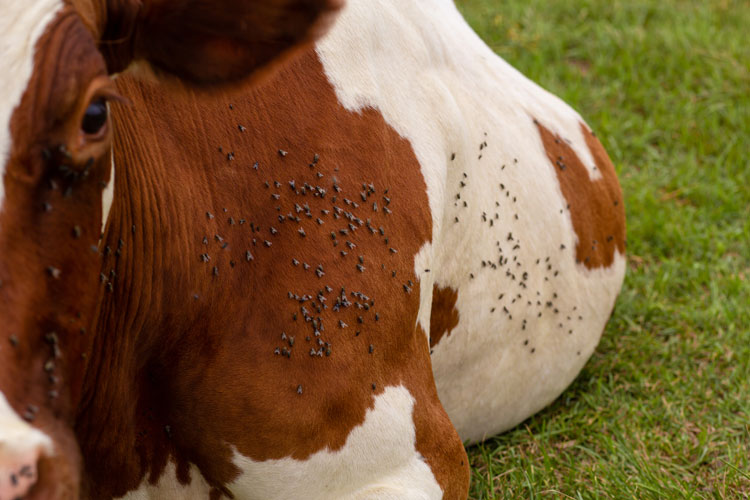
Controlling flies on the farm is a constant process, but knowing what you’re dealing with and developing a thorough pest mitigation plan can make a significant difference in limiting their impact.
Of course, flies are at their worst in the summer as rising temperatures facilitate the acceleration of their short life cycle. In a recent Dairy Calf and Heifer Association webinar, Rick Hack described that pest tools for farmers to use focus on attacking the larvae and adult stages of the life cycle, as opposed to the egg or pupae stages. “Proactive fly control involves controlling both the adult and larval population,” he stated.
A proactive approach can be summarized in the four-step plan Hack presented.
Inspection
Assessing the situation is the first phase of the plan. This includes determining what kind of flies are of concern and identifying potential breeding areas.
Stable flies, commonly found on an animal’s legs, and horn flies, found on the back and belly, inflict painful bites as they feed on blood. House and face flies are a nuisance, Hack described, but face flies must obviously be monitored to control pinkeye infections.
Fly breeding will soar in damp and wet conditions, such as around manure, freestalls, silage, and wooded areas. Long grass provides shade that’s beneficial for breeding. With a combination of these factors, Hack described the area around the bottom of calf hutches as an example of “fly heaven” for breeding. Pinpointing where else on your farm these conditions may occur and flies are most prevalent will help attack them.
Sanitation
Next is determining how these breeding areas can be minimized. Hack recognized that, “The elimination of all fly breeding material is not feasible to prevent adults from repopulating.” However, keeping grass trimmed, manure removed, and facilities cleaned will help slow the potential for fly reproduction.
Treatment
Using an effective treatment means applying the product at the right time, in the right way, for the right fly, Hack emphasized. For example, don’t use a pour-on product for stable flies that live on animals’ legs.
To stay on top of a fly problem, Hack recommended using a larvicide throughout the season as well as adulticide treatments when needed. The two products should be of different chemical classes to prevent resistance.
Spray larvicides can be mixed with water to treat breeding areas, such as tall grass, regularly. Granule products work well for wet surfaces, and daily feed-throughs can be useful for animals on pasture.
No matter the type of adulticide used, Hack reminded attendees to not solely focus on the “thrill of the kill” — products can be thoroughly effective without flies dropping dead immediately. It’s also important to read labels and track how long one treatment will be effective for.
Monitoring
The final step in Hack’s fly-control plan is regular monitoring. Use fly tapes and speck cards as part of the farm’s routine, and note if the problem gets better or worse. Responding to problems as they pop up will be much less effective: “You are constantly catching up,” Hack declared.








